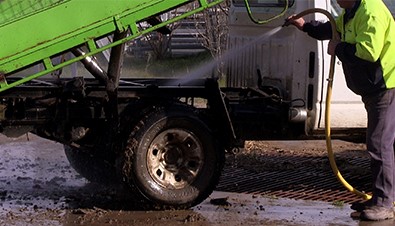Come Clean on your Biosecurity needs
https://www.farmbiosecurity.com.au/come-clean-on-your-biosecurity-needs/, N.D
While the movement of livestock is the most likely pathway for spreading animal diseases and pests and weeds throughout Australia, people, vehicles and equipment can also act as vectors for many endemic and exotic biosecurity threats.
With the recent announcement by the Queensland Government that accredited lay people will be permitted to provide pregnancy testing services to the cattle industry, Animal Health Australia (AHA) are reminding livestock producers to be aware of the biosecurity risks when dealing with consultants and service providers who may be travelling from property to property for their work.
“While the vast majority of these professionals know the risks their work can pose and take those risks seriously. It pays for you as a livestock producer to be aware of who is coming onto the property and the circumstances in which they may be coming into contact with your livestock.” said Dr Simon Humphrys, Executive Manager of Biosecurity and Product Integrity at AHA.
Clothing, boots, tire treads and equipment can become contaminated with disease agents or weed seeds, while many insect pests are known to hitch rides in the undercarriages of vehicles or within containers.
When people, vehicles and equipment move from property to property, those contaminants can be carried with them, making biosecurity an important barrier for preventing big problems from spreading.
Fencing can be a useful tool in combating this issue as it can slow people down and ensure that every person, piece of equipment and animal that is entering your property has properly cleaned, checked and can guarantee will not spread disease and weeds.
“…where practical, provide guests that are going into production areas on your property with dedicated gear like overalls, boots, vehicles, etc. so you have greater control over routes of entry for risks.” said Dr Simon Humphrys
Other strategies, such as providing visitor parking and clearly marking clean and ‘dirty’ zones via signage, and productive use of fencing can help prevent problems before they’re had a chance to establish. Meanwhile, keeping accurate records of visitors movements – along with new livestock and plant purchases and consignments of supplies – can help to trace an issue to its source.
